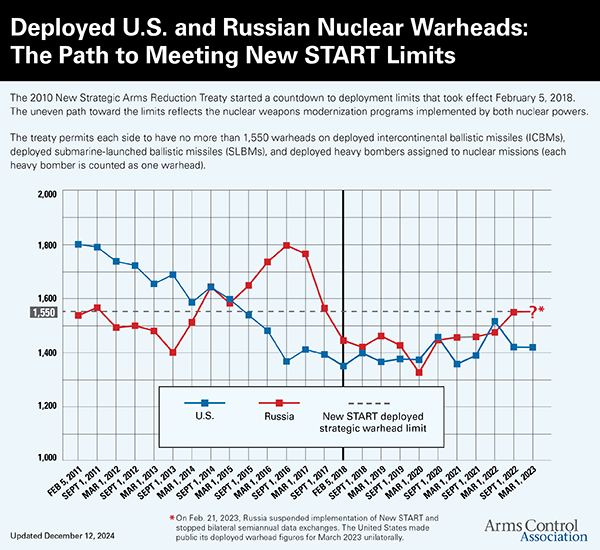Contact: Xiaodon Liang, senior policy analyst, [email protected]
On April 8, 2010, Russia and the United States signed the New Strategic Arms Reduction Treaty (New START). The treaty requires both sides to limit the number of deployed strategic nuclear warheads to no more than 1,550 and fielded delivery platforms to 700. The treaty also permits the United States and Russia to conduct 18 annual on-site inspections of facilities operated by the other country. Biannual data exchanges indicate the current state of their strategic forces.
As of March 1, 2022, Russia had 526 deployed strategic delivery systems, 1,474 deployed strategic nuclear warheads, and 761 deployed and non-deployed strategic launchers. Russia is in the process of both retiring many of its older strategic systems and replacing them with new systems.
In February 2023, Russia announced it would suspend implementation of New START and halt inspections with the United States. Russia stopped transferring notifications required under the treaty by the next month. In January 2025, the U.S. State Department said in its annual New START compliance report that:
"The United States assesses with high confidence that Russia did not engage in any large-scale activity above the Treaty limits in 2024. However, Russia was probably close to the deployed warhead limit during much of the year and may have exceeded the deployed warhead limit by a small number during portions of 2024."
For a factsheet on U.S. strategic nuclear forces under New START, click here.

For details of the composition of Russian strategic forces, please see our Russia Arms Control and Proliferation Profile factsheet.
